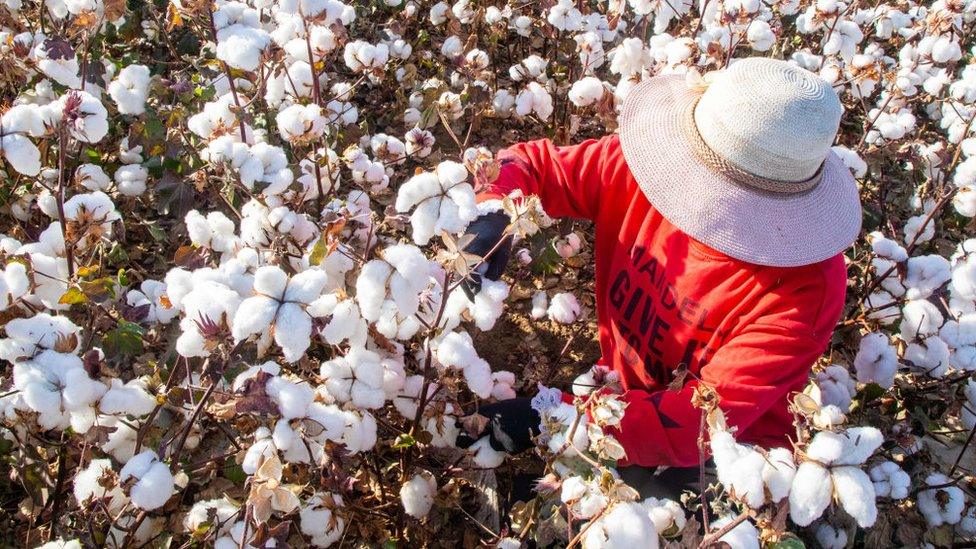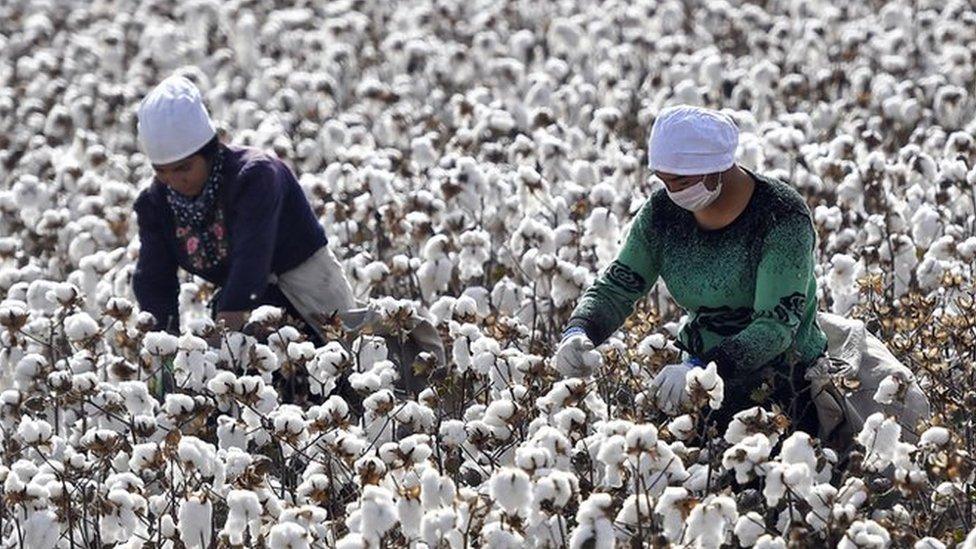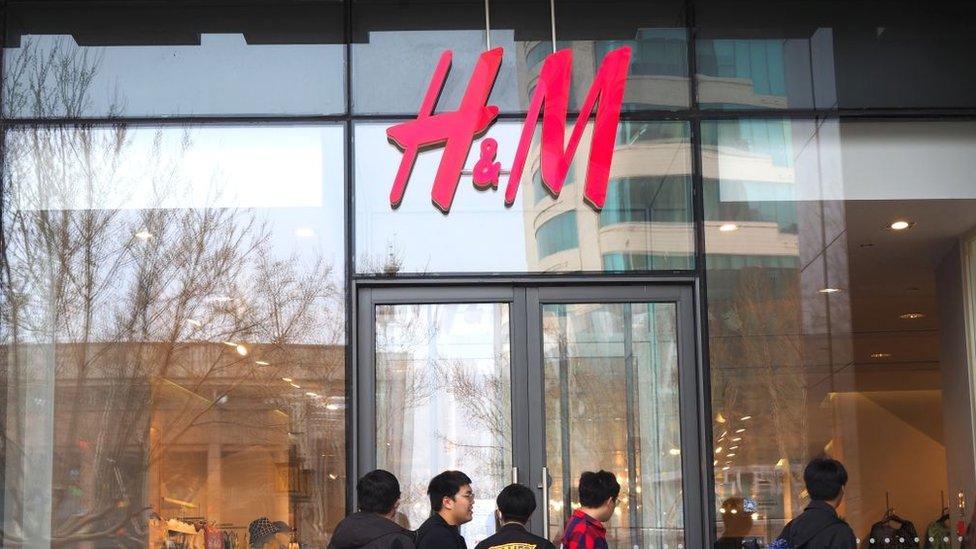Xinjiang cotton: How do I know if it's in my jeans?
- Published

Xinjiang cotton is some of the best fabric in the world. It's also, human rights campaigners say, produced by forced labour. Some Western brands have removed it from their supply chains, leading to a backlash from Chinese celebrities and netizens. Welcome to the row over cotton from the Xinjiang region of China.
What are the concerns about Xinjiang cotton?
Rights groups say Xinjiang's Uighur minority (also spelled as "Uyghur") are being persecuted and conscripted for forced labour.
Evidence shown to the BBC suggests that upwards of half a million Uighur minority workers a year are being marshalled into seasonal cotton picking under conditions that appear to raise a high risk of coercion.
"Right now, there is near certainty that any brand sourcing apparel, textiles, yarn or cotton from the Uyghur Region is profiting from human rights violations, external, including forced labour, both in the Uyghur Region and more broadly throughout China," says the Coalition to End Forced Labour in the Uyghur Region, whose members include Anti-Slavery International and the World Uyghur Congress.
Who uses it?
It can be difficult to pin down, since much of it gets absorbed into global supply chains. But if you bear in mind that Xinjiang cotton accounts for 85% of Chinese production and 20% of world supply, the chances are high that you've got some in your wardrobe.
There are two ways of looking at it: top down, and bottom up.
Retailers typically only know the first tier in their supply chain. For example, a retailer commissions a shirt from a supplier, who buys the fabric from a mill, which buys the yarn from a spinning mill, which bought the cotton from a broker, who bought cotton from any number of farms.
Tracing cotton back to a specific farm is almost impossible - there are just too many.
Think of the supply chain like a sand-timer: there are hundreds of thousands of farms and almost as many garment factories. The spinning mills in the middle are the pinch point, where the cotton is blended and turned into yarn.
Certification schemes for cotton mills, such as Yarn Ethically & Sustainably Sourced (Yess), external, work to eliminate forced labour from the supply chain.
But that's of limited help to you as a consumer if you're just ordering a pair of jeans off a retailer's website.
"If you really want to be confident of the traceability of the cotton in your jeans, you have to look for Soil Association organic cotton or Fairtrade," advises Clare Lissaman from Common Objective , external(CO), a sustainable fashion sourcing platform.
What does China say?
China rejects the accusations of using forced labour and denies holding Uighurs in detention camps. It says the camps are "re-education" facilities being used to combat terrorism.
Many Chinese have called for boycotts of Western brands including Nike and H&M after they expressed concern about the alleged use of Uighur forced labour.
H&M has been erased from Chinese e-commerce sites including Pinduoduo, JD.com and Tmall.
Burberry lost a brand ambassador, actress Zhou Dongyu - and it wasn't the only one. In 48 hours, 27 celebrities cut ties with companies including Adidas, Calvin Klein and Nike.

Where is Xinjiang and who are the Uighurs?
Xinjiang, China's biggest region, produces about a fifth of the world's cotton. An autonomous region in theory, in reality it faces restrictions which have only increased in recent years
Millions of China's Uighurs, a Muslim minority that sees itself as culturally and ethnically close to Central Asian nations, live in Xinjiang
In recent decades, mass migration of Han Chinese (China's ethnic majority) to Xinjiang has fuelled tensions with Uighurs which has at points flared into deadly violence
This has resulted in a massive security crackdown and an extensive state surveillance programme, which critics say violate Uighur human rights. China says such measures are necessary to combat separatism and terrorism
Uighurs have been detained at camps where allegations of torture, forced labour and sexual abuse have emerged. China has denied these claims saying the camps are "re-education" facilities aimed at lifting Uighurs out of poverty
Read more: Who are the Uighurs?
You may also be interested in...
The video Uighur model Merdan Ghappar filmed inside China's detention system
Related topics
- Published13 November 2019

- Published26 March 2021
